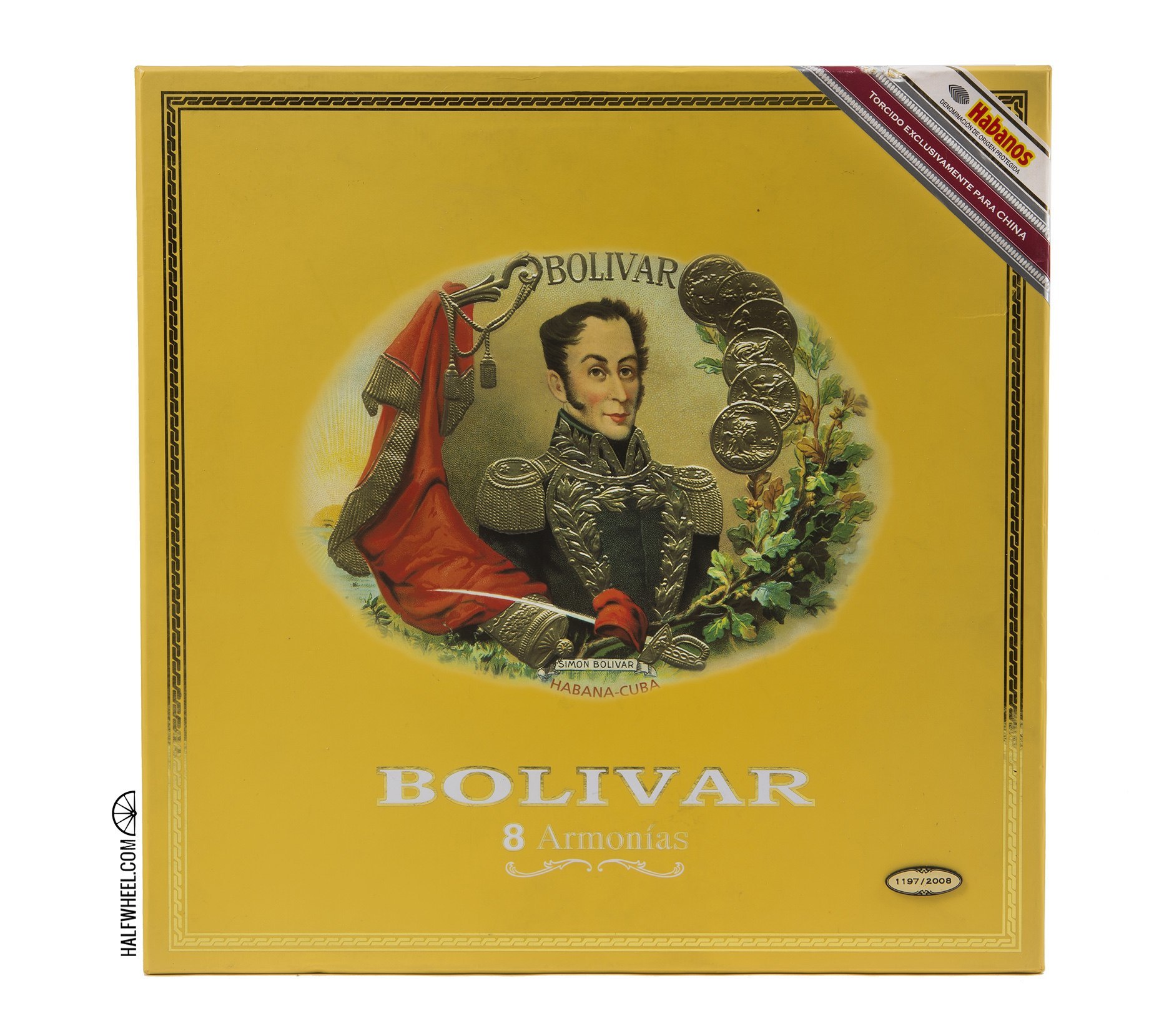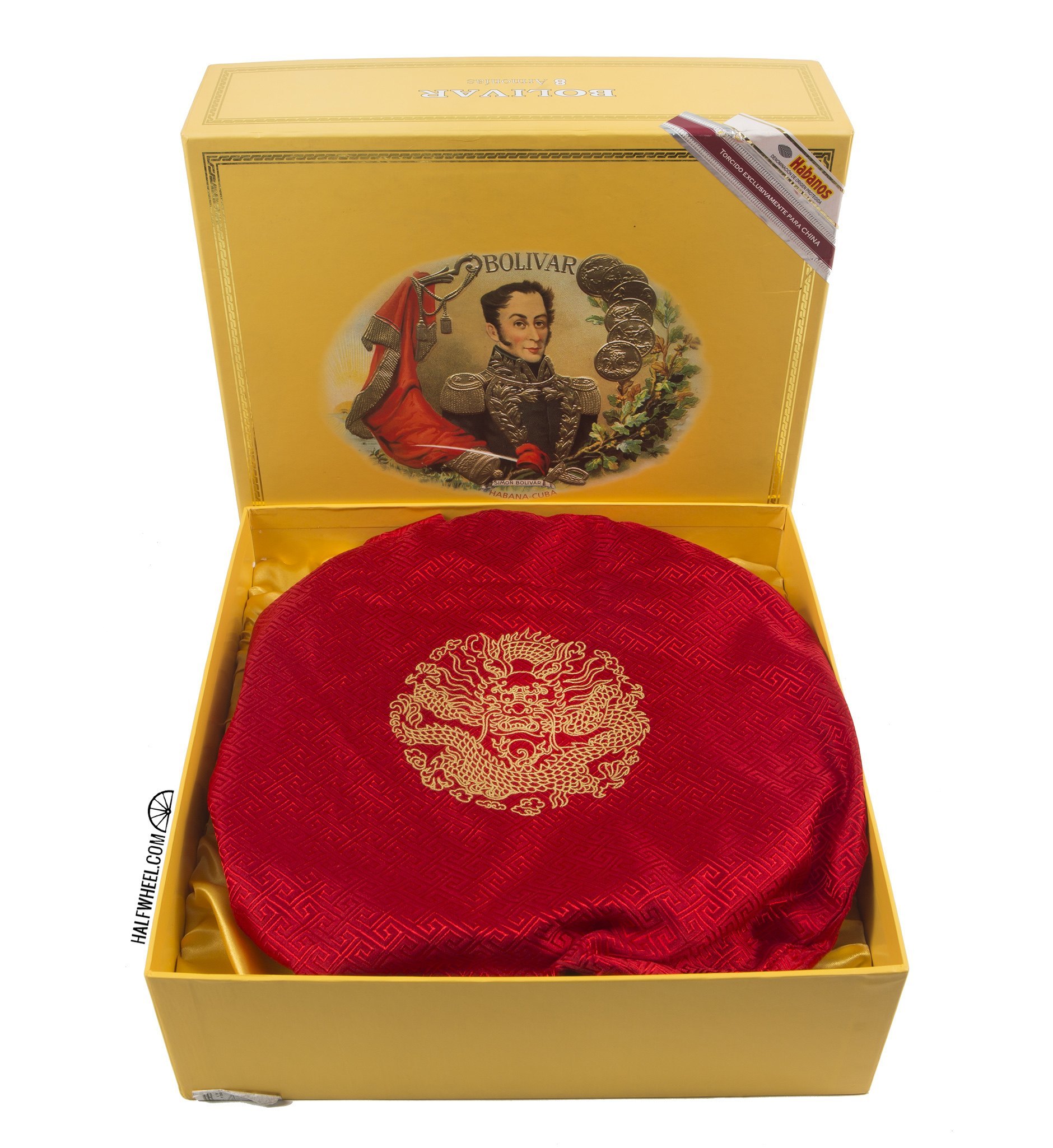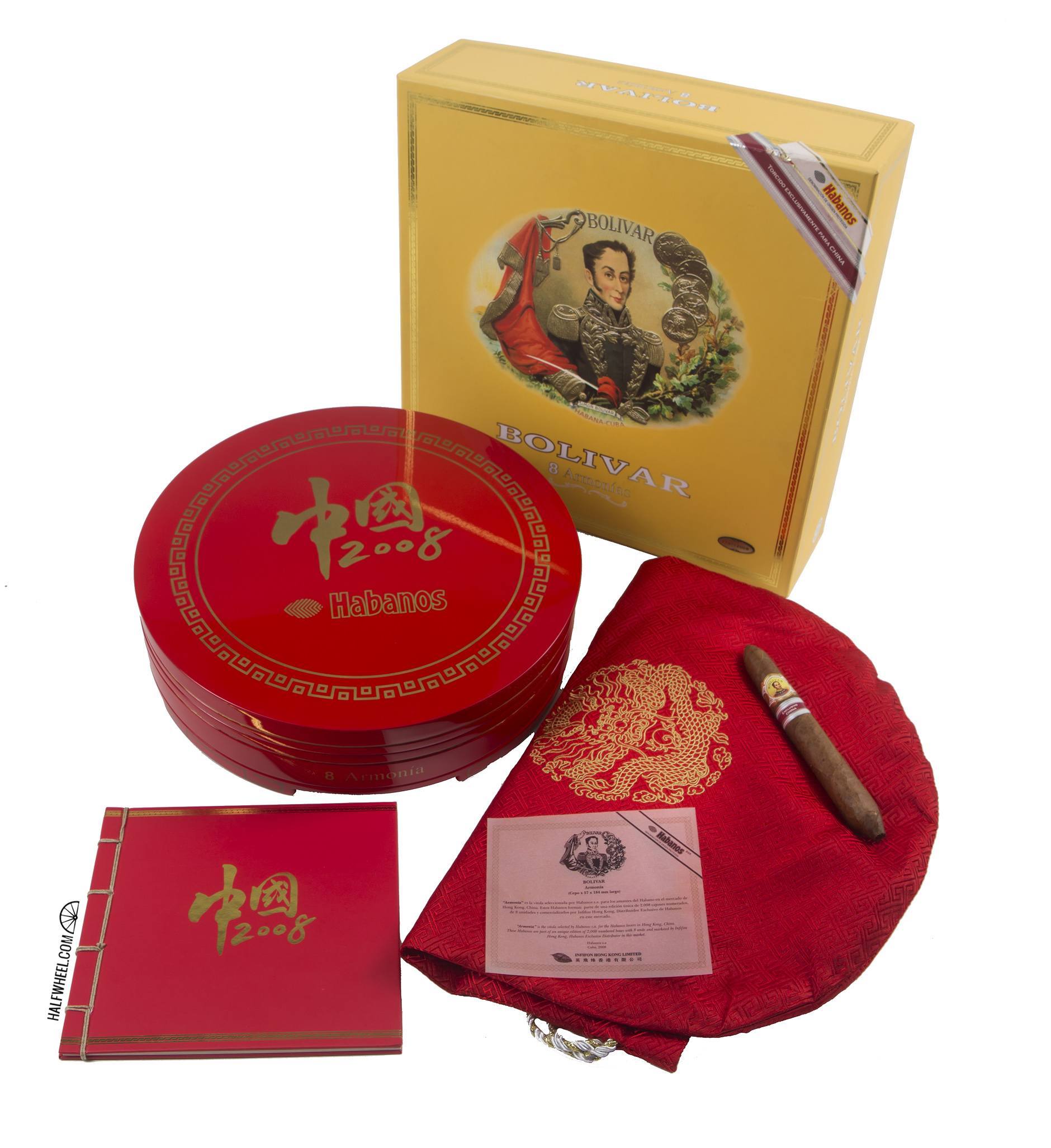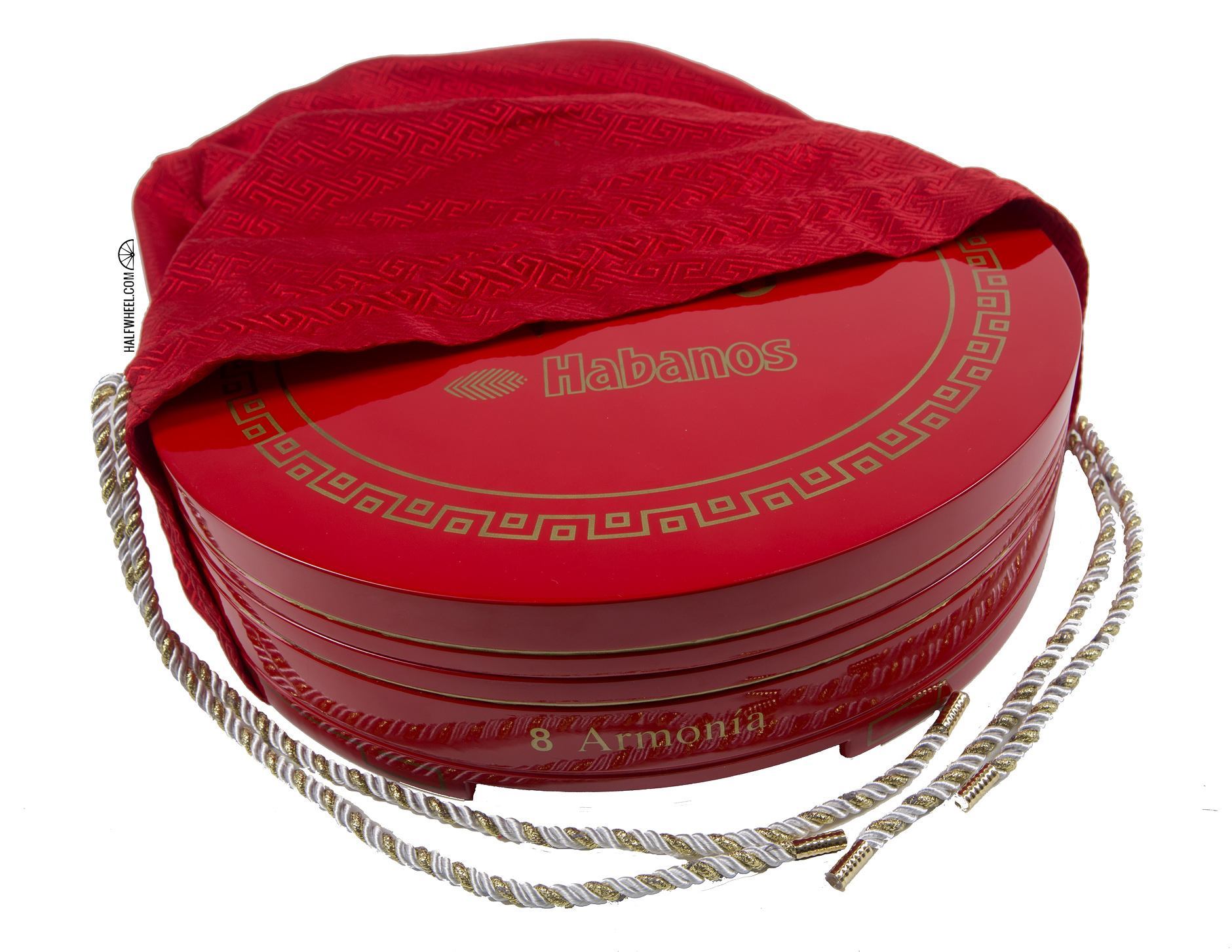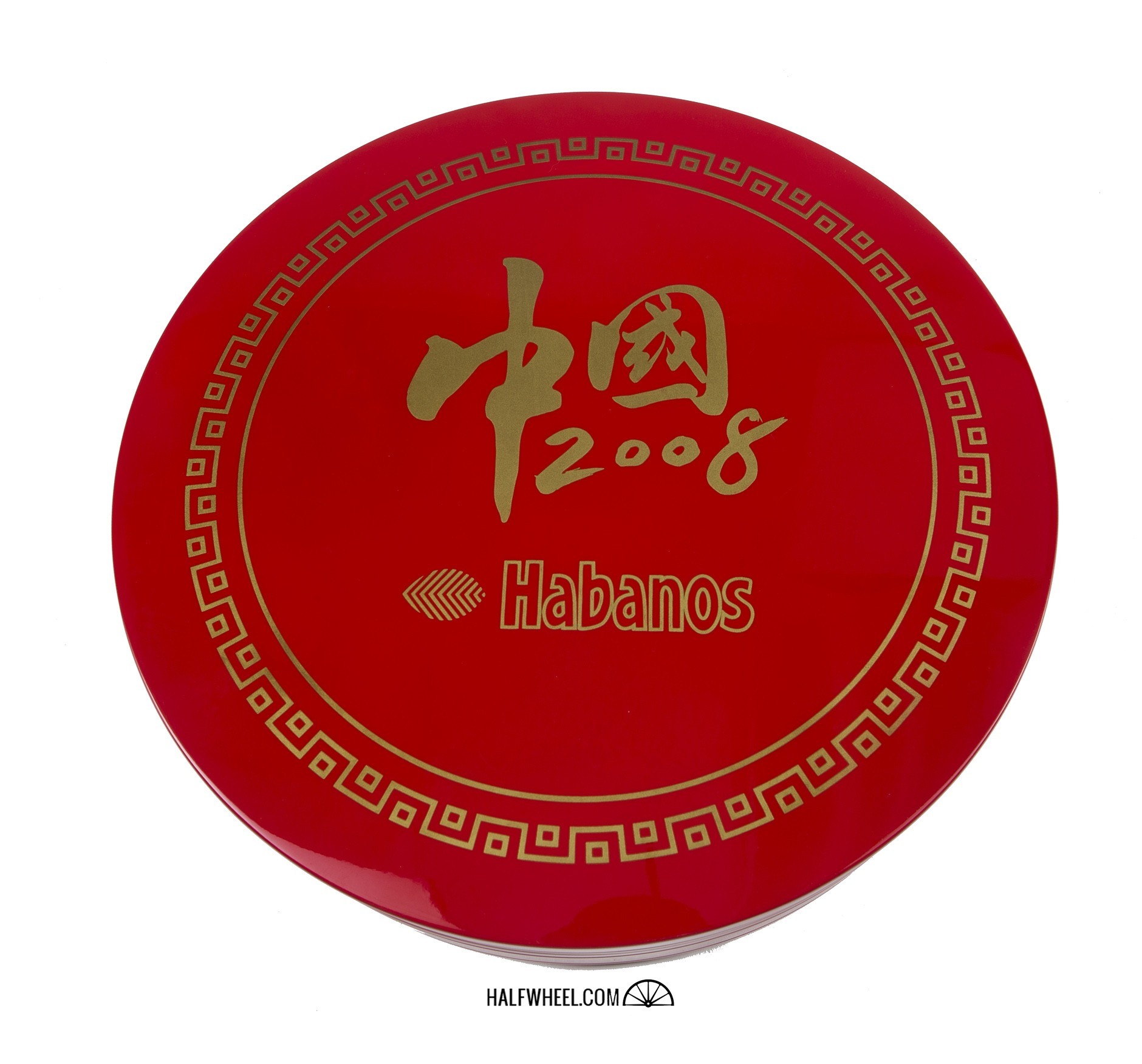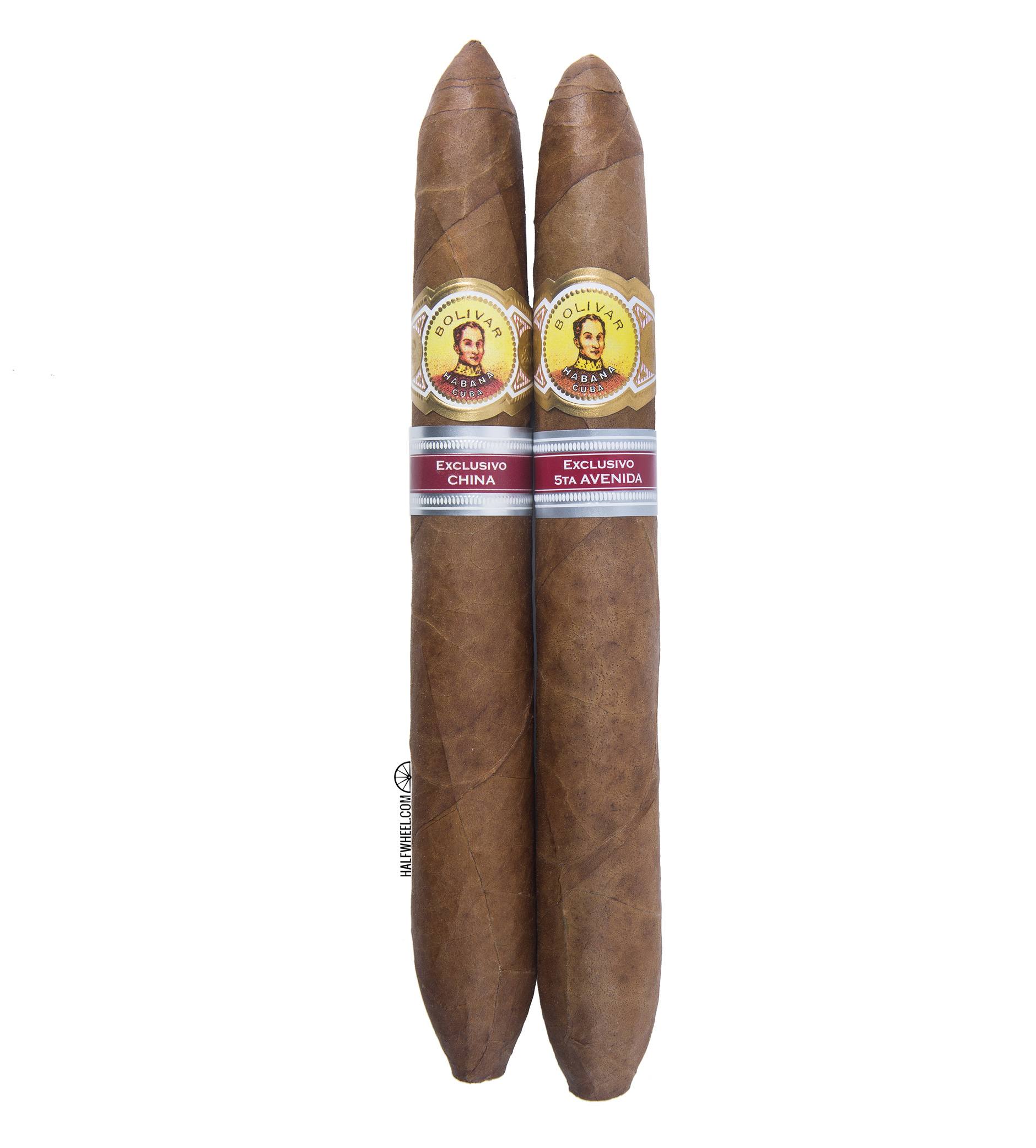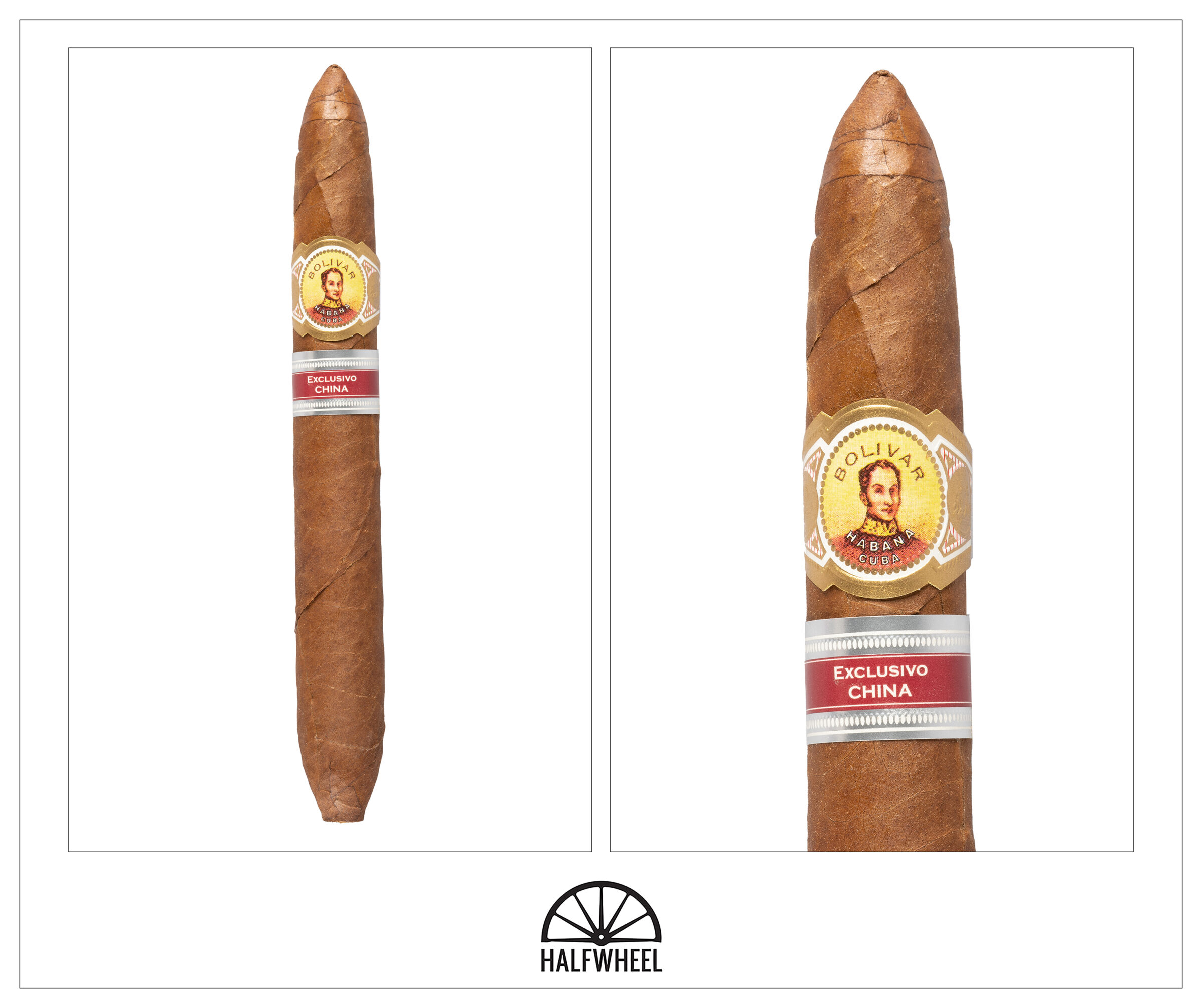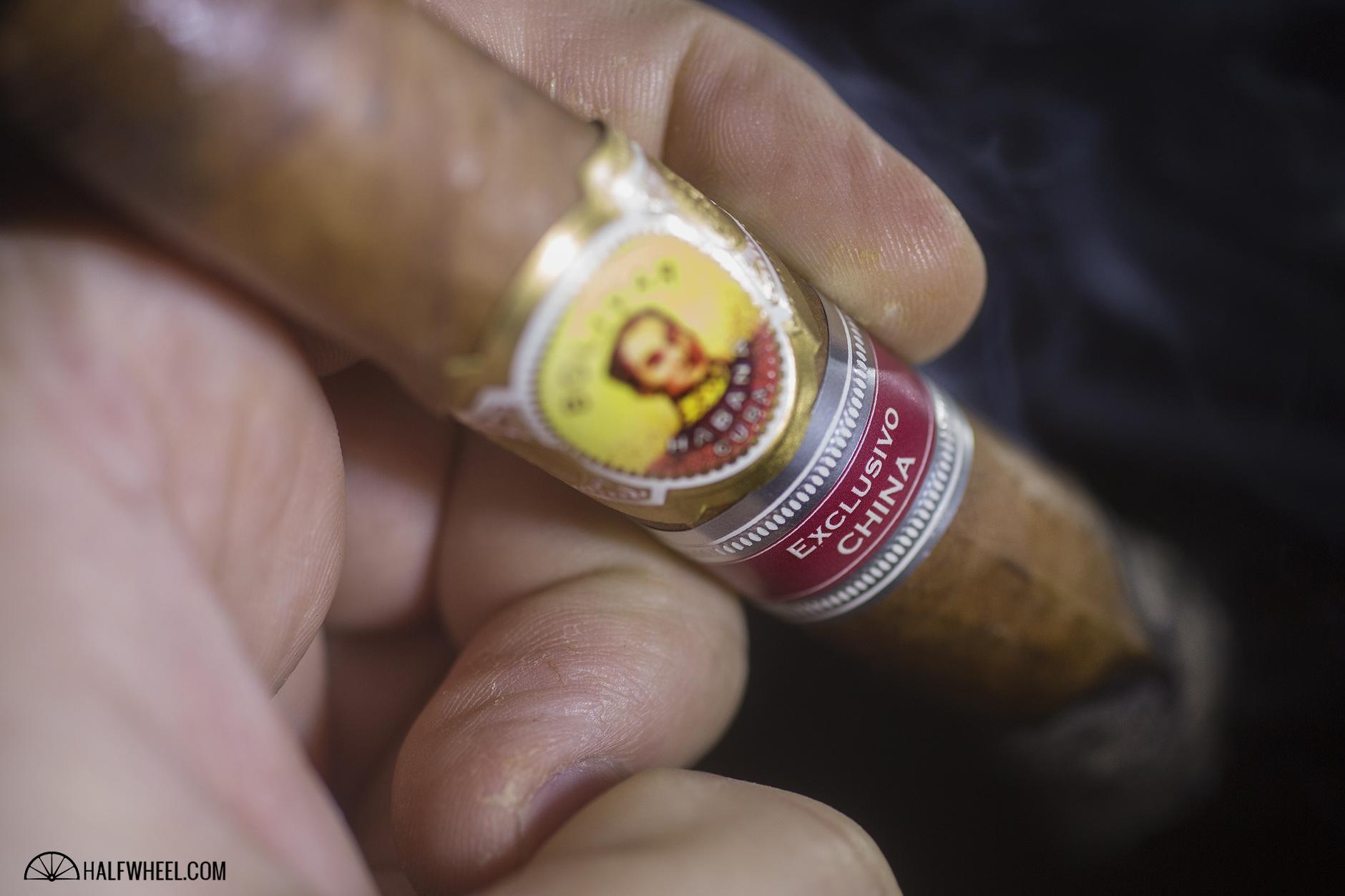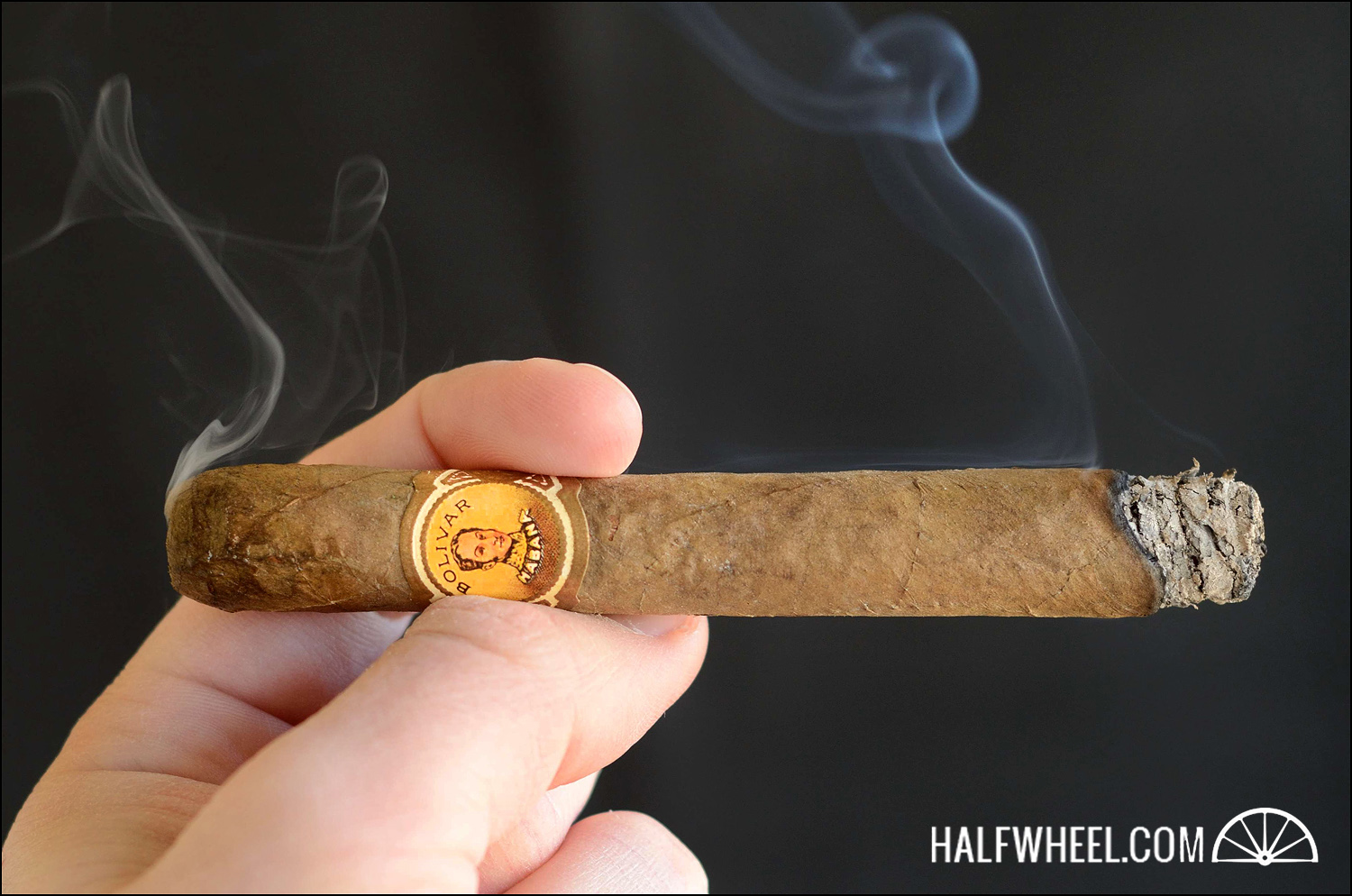When visitors stop by halfwheel’s office, the cigar box that most likely gets asked about is the Bolívar Armonía.
It’s part of Habanos S.A.’s Edición Regional series, a collection of hundreds of different releases split between various Cuban cigar lines. The basic premise is that Habanos S.A. allows distributors to commission an exclusive, limited edition cigar for a country or region. For Edición Regional releases, the cigars use a vitola that is currently active in the Habanos S.A. portfolio, but not made for a brand, though there have been times when discontinued cigars have been used for Edición Regional releases. There are other rules, such as which brands can be used—Cohiba, Montecristo, Romeo y Julieta and others cannot—and distributors are now restricted to just one release per year, though the cigars oftentimes do not ship in the year that they are commissioned for. The Edición Regional series launched in 2005 and the Armonía was released when there were fewer rules around the then-less established Edición Regional program.
With a few exceptions, the cigars share one similar attribute: a red secondary band is added that says Edición Regional and then the name of the country, region or distributor the cigar was made for. Beyond that, the packaging can vary wildly. There have been 10-count boxes, 25-count boxes, 50-count boxes and even jars. However, one Edición Regional box stands out as the most unique: the Bolívar Armonía.
For those unfamiliar with Chinese culture, the number eight—pronounced ba—is considered lucky because it sounds close to fa, a word used to describe prosperity. In 2008, Infifon HK Ltd.—the distributor of Cuban cigars in mainland China—commissioned the Bolívar Armonia, a 7 1/4 x 57 salomón vitola.
In leaning in with the eight is lucky theme, boxes were priced at ¥8,888 and there were 2008 boxes of eight cigars. A box of eight would be relatively unique, but these boxes are unlike any other modern Cuban cigar box. It was a giant round circle painted in high-gloss red with gold text. The boxes themselves came in a yellow cardboard box that could probably hold 40 of these large salomónes. One other quirk, it had a massive Habanos S.A. logo on it, something that is rarely used as a prominent logo on packaging.
Nearly eight years to the day—that use of eight is coincidental—I reviewed the Armonía. Here’s what I said:
The Bolívar Armonía is a good cigar, but I wouldn’t put it into the upper echelon of Edición Regional releases from Habanos S.A. The flavors indicated that there was both plenty of life left, but that perhaps even more time was needed for the seven-year-old cigar to shine. As is so often the case, the cold draw was incredible, but the cigar just couldn’t live up to it once lit. I’m glad I got to smoke one, but I most certainly wouldn’t put the effort or money into buying another one.
One interesting note: in 2017, 5th Avenue Products Trading GmbH—the Austrian and German distributor of Cuban cigars—released the Bolívar Tesoro, a 7 1/4 x 57 Bolívar salomón, i.e. the same cigar. This is a quirk of the Edición Regional program: it is possible for these cigars to get released again under a different name and by a different distributor. In that case, the packaging was much more pedestrian.
- Cigar Reviewed: Bolívar Armonía Edición Regional China (2008)
- Country of Origin: Cuba
- Factory: Undisclosed
- Wrapper: Undisclosed
- Binder: Undisclosed
- Filler: Undisclosed
- Length: 7 1/4 Inches
- Ring Gauge: 57
- Vitola: Salomón
- MSRP: ¥1,111 ($156) (Box of 8, ¥8,888)
- Release Date: 2008
- Number of Cigars Released: 2008 Boxes of 8 Cigars (16,064 Total Cigars)
- Number of Cigars Smoked For Redux: 1
The color of the wrapper is what I would consider to be prototypically Cuban: medium brown with lots of reds coming through and an overall consistent color, save for some lighter spots around certain veins. That said, this isn’t the best-looking cigar, especially for the money. There are some ugly veins, a bumpy roll and two visibly loose seams. Some of that could be exasperated by the aging, as these cigars have probably shrunk a bit after being stored in a humidor we keep at 65 percent relative humidity. The cigar is rock hard to the touch, though I’m not too concerned. There’s not much in the way of distinct aroma scents: a medium mixture of generic tobacco with ammonia and woody accents. The foot is slightly stronger with a sweeter wood aroma, but not much else to be picked up. Fortunately, cutting the cigar doesn’t produce any unraveling, something that’s always a concern after this much aging. Cold draws are predictably tight with some candy-like sugary sweetness, a unique floral sensation and some spicy cinnamon underneath. It’s medium-full and smooth.
Given the shape, I’m prepared when the first put off the Bolívar Armonía doesn’t produce much smoke. The first puff’s flavor is a super smooth woodiness with some savory characteristics and a touch of creaminess. For the first few minutes, I take puffs every 30 seconds or so, just trying to keep the cigar lit until enough of the foot is lit and the cigar opens up. That happens, and I get to breathe a sigh of relief as the draw goes from being nearly plugged to just about perfect, maybe even a tad more open than I was expecting, but still with a resistance that tells me I’m not going to have to worry about the draw for the remainder of this large cigar. Surprisingly, the flavor is fairly bold. It’s one of the classic Cuban profiles: hearty woodiness with some sweetness and a controlled amount of pepper. Rice cakes, dry bread, black tea, brown sugar and minerals make the list of secondary flavors, but the woodiness remains the star. The finish isn’t a dramatic shift from the main flavor, perhaps a touch more pepper, but the flavor development is quite methodical from the moment the smoke enters my mouth until well after it leaves. Retrohales have a balanced mixture of nuttiness, lemon, lavender and brown sugar. Peanuts take over during the finish and oftentimes lead to some sweet flavors like caramel, vanilla bean and brown sugar. While the entire flavor profile is refined, the retrohale’s finish is the part that shows the aging the most. Flavor is full, body is medium-full and strength is medium. Construction is fantastic.
This is not a cigar that provides many changes, but given how good the flavor is, I’m fine with the relative consistency. After the halfway mark, the Bolívar is getting slightly spicier. I’m not sure if it’s more a result of spicier flavors or rather being caused by a reduction in some of the other elements that allow the spiciness to break through. Woodiness remains the leading flavor. It’s neither a specific wood species nor a specific wood sensation; instead, it’s a melody of different wood flavors like the smell of a humidor, with sawdust, tree bark and even some burning campfire elements. Secondary notes include mineral flavors, sugar, leather and black pepper. For a few puffs, I taste a ginger flavor, but it’s not present for long. The finish has changed and tastes like steamed milk, also brining generic sandwich bread flavors and some herbal aspects that combined to remind me of a sandwich spread. Retrohales vary between being led by woodiness or creaminess. If the latter, I oftentimes find floral flavors, Spanish cedar and caramel as secondary notes. Like the normal aftertaste, the retrohale’s finish has lots of creaminess, joined by minerals and earthiness. Flavor is full, body is medium-full and strength is surprisingly medium-full. I make a touch-up with a bit more than two inches remaining, trying to help smoke production and address a small portion of the cigar that isn’t burning as quickly as the other parts. Beyond that, construction was great for the roughly three-hour duration.
This is not what I was expecting. After finding the Bolívar Armonía to be quite pedestrian, it’s surprising that eight more years of aging produced a cigar that was much more robust than the one I first reviewed. It is entirely possible that this is based on the sample size: I smoked one cigar eight years ago, and one cigar now. Perhaps it's the case that this cigar was simply better than the first one. Whatever is the case, this wasn't not the most complex of profile, both in terms of the number of flavors and the changing of flavors, but what it lacked in complexity, it made up for in richness. This is what I would hope for after investing in aging: a cigar that smooths out almost every bit of harshness or roughness but leaves behind richness and not just smoothness. I’m glad I picked this cigar to redux; I never would have thought it would have turned out this good.


